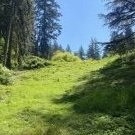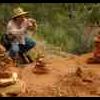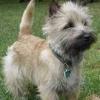Recommended Posts
Let me preface by saying that I've been practicing some Wim Hof methods for the past month and I love them. I lost about 8 pounds and my energy levels are up. Having said that, I don't think his methods are similar to Tummo. Note that I am citing from Kathleen McDonald, who learned Tummo from traditional sources.
Compare:
I think that Wim's method leverages bodily anatomy, whereas Tummo is more meditative. Accordingly, I actually think Wim's method is more accessible.
-
 2
2
He has been doing the media rounds, and I sense this method getting wider exposure very soon. A lot of the self development personalities like Tim Ferriss et al, are doing interviews and Reddit has a whole sub-reddit devoted to him.
I had been meaning to start the method myself, and started today. Yes, you can feel something immediate and tangible very quickly. It induced strong prana shaking in me, leaving me with a sense of calm and strong buzzing energy. I imagine coupling this method with strong visualization can lead to some great results. Any experiences from folks doing this ?
I'm on week 10 ![]()
http://thedaobums.com/topic/39544-wim-hof-method/?p=650846
Summary from my thread:
To summarize its been a worthwhile journey. Short and well defined. It's made me mentally and physically tougher. Taught me to breath bigger and better. It's made me face physical shock, like icy cold water, and see it as an illusion. To face intimate stress of breath retention and relax and push my limits. To move a little away from being a coddled person in a 24/7 controlled environment to a natural being who can take off there shoes, jacket and shirt in the snow and walk around (for a bit anyway). Trusting my body to react as 10,000 generations trained theirs to.
Benefits.. Lets take the breathing. I've learned to breathe much better. I was able to jump into a practice that was beyond me earlier, ie doing the 8 - 20 - 16 (now 8 24 16) breath pattern. To fill up my lungs bigger and better then before. Learned to relax once they're filled. For the 16 seconds out, I have the mental and physical control to take my time. That 'yogic breathing' pattern isn't part of the Wim Hof Method but the practice has given me far better breath control then I've had before. I intend to see how far I can take such patterns. Breath links mind, body and spirit.
The holds are also kinda miraculous. If someone said its possible to hold my breath 2 minutes 20 some seconds after exhaling I'd say they were crazy. The breath retention while unpleasant has helped develop will power and relaxation under stress. I also feel I've got a mental block here and once I get past it, maybe I'll get the 3,4 even 5 minutes holds some report. Maybe.
In the practice there are periods of deep peace that feel very good. The inner vision lights up. The fluorescence behind the eyes show interesting lights and imagery. There may be some physical brain hacks going on. Blood being shunted to parts of the brain that unusually don't get much attention.
I haven't been doing much of the yoga he calls for, despite that my flexibility has been improving. Some due to stretching using his breathing technique, part of of it might be the practice relaxes the body and takes away some unconscious restraints of the mind. I can squat down on my haunches (Indian Squat?) much lower and stay there . That used to give me problems.
He calls for doing push ups, and my pushup numbers are higher. I'm doing a 2 or 3 sets of 44ish easy incline pushups and I'm seeing some definition from it.
The cold showers have progressed nicely. Despite being on the swim team in highschool I've always been a wimp about cold water (cept for Aikido Winter Misogis). The gradual approach of the method has helped me man up. Its just a shocking sensation I can handle, after icy showers I don't shiver. Sometimes I even like'em.
Some research shows it improves the immune system, stimulates the cardiovascular. I make sure to get the cold water in my arm pits to stimulate the lymph nodes there. There's even some writing on benefits of cold water on the head to help keep your hair so I make sure I hit there too. I've always had dandruff, but not any more, the Hof method and not using shampoo has cured it.
I've been working on cold conditioning, going out in freezing weather without a jacket. Redefining what I consider cold, when its acceptable and when a jacket is needed.
Let me add this:
Cons: It's not a comfortable practice. Cold showers while invigorating are a bit shocking and long breath holds can feel like you're being choked. The course isn't cheap at $200 (http://highexistence...-immune-system/ might still have 25% off coupon making it $150). I get the feeling there is a significant attrition rate.
Lastly and significantly there is some danger involved. Some of the exercises may be spiking your blood pressure. At some points your in the snow and could get frost bite. Your doing long retention holds in the shower and could faint or lose balance, same with being in a ice filled tub by yourself. There is risk involved.
Which I accept. Matter of fact I like it. My life in my hands. A little risk to gain a new skill set. A little eccentricity because I'm an individual, breaking rules and taking names. ![]()
-
 5
5
This is a wonderful report Lerner! It sounds like it has really made a positive impact.
When I get the money I think I may splurge and get the package.
Right now, I am on Day 4 of just simply doing the main breathing practice with retention. I love it already, it feels incredibly strengthening both on a physical and subtle energetic level. I sense that if properly used it can really open up energetic blockages.
I have been doing the cold showers, which I admit I had been doing already but going from warm to cold, now I just do straight cold and the difference is immeasurable.
Do you think it's possible to see decent progress just doing the breathing technique and just extending the holds?
Cheers.
-
 1
1
Do you think it's possible to see decent progress just doing the breathing technique and just extending the holds?
Cheers.
I shouldn't be looked upon as an expert (or even an intermediate) in the system. But I think so. In truth the breathing practice stays the same throughout the 10 weeks. Along with the cold showers that's the majority of the system. The showers get longer, by week 5 they're 10 minute, then actually go down and you do some full breath retention holds gently and carefully in the shower.
In most ways those 2 practices are the main thing. Building up endurance. Do what you can without pushing too hard. Buying the course is worthwhile, not for any secret information, but it has the yoga and listening to and watching Wim Hof is inspiring. It outlines the course in a nice booklet, with explanatory videos, plus you read dozens of comments and clarifications from those doing the course as well as access to the Facebook site.
The biggest warnings are don't do the breath hold underwater, you can drown. Watch your balance in the shower when doing retention holds, they're never longer then a minute in the shower. The breath holding isn't a competition, important since you have people posting unreal times and you don't need to be. I'm certainly on the lower end of what people are reporting.
I've found on youtube 'The Swedish Iceman' is a great resource. He's a guy who's done the course as well as (I think) done sessions with Wim Hof. His videos tend to clarify some practices.
Edited by thelerner-
 5
5
TheLerner: I remember you used to do HT. I'm guessing this is a more physical practice with the breathing and such. Plus with the physically testing yourself in the cold and with holding your breath instead of say testing one's posture in iron shirt. Do you find things like MCO & all the other channels just open themselves through the practice? I've tried other practices but i think i've done HT so much that everything just seems like it opens the channels and activates the HT within me haha.
I've always liked Wim's outlook and practices and how he goes all about it. It's always attracted me because he's real, upfront and just dying to help others, but not many people want to know - Which goes all throughout life in many different ways, general people don't want what's best for them and being given away for free or cheap, they want expensive and a second rate job done for them. Wim has been teaching and been on TV for years but he got more attention overseas than he did in his own country. I mean really, $200 bucks is not expensive, people will pay $90 for a massage, and if you get the whole course it's worth it.
I've bought the iceman before but didn't get alot out of the book really, seemed like he was still feeling his way a bit, had confidence in his technique but not in his ability to spread the benefits, but it's a few years on since he'd written the book and I watched the Ted Talk and he looks more confident and experienced in spreading the word.
I think i might try the breathing and whats been posted on the this website http://highexistence.com/the-wim-hof-method-revealed-how-to-consciously-control-your-immune-system/ that somebody posted before and see how I go after a couple of weeks. It's summer here in Australia so cold showers are nice at the moment and the cold water doesn't even get that cold hahah, plenty of time till it cools down to a winter cold shower.
Its been awhile since I've been doing Healing Tao stuff. I'll still run the orbit sometimes, but its always felt like more of a nerve/physical mantra, ie like a ball is rolling up and down along my spine and front rather then what some describe as the 'real' MCO which is a more powerful phenomena. Worthwhile, but after years, its not the kundaliniesque experience it should be. Note, I tend to be energy insensitive though.
I think following the writing in Higher Existence https://highexistence.com/the-wim-hof-method-revealed-how-to-consciously-control-your-immune-system/ you can take the practice pretty far. They used to have a 25% off coupon.
This morning I was thinking of how I do the Wim Hof Breathing. It's fast yet deep. Some describe it as hyperventilating, but I consider it slower then that and ofcourse controlled.
When I concentrate on first expanding my stomach once it 'inflates' my attention moves to my lower ribs and I like to feel them expand a bit, then I fill up my upper chest, which tends to arch my back a little and spread my shoulders. I try not to 'pressurize' much. Keep it full without adding. Taunt but not uncomfortable.
The out breath is quick and natural. Letting it go naturally without pushing out the last of it. What ever releases normally. On the last breath of the series I'll mentally try to keep a little more air in on the release, not by much, but a little. I'm about 2 or 2 1/2 seconds a breath including a tiny pause at the end to feel relaxed. That's how I do it, other may be a little different.
Learning to breath that deep has helped me on another practice, Silent Grounds Yogic Breathing. I'm comfortable with there 8in 24hold 16out cycle and have started with the 8 32 16. After 8 or 9 repetitions tends to start feeling uncomfortable, but I'm getting used to it. And its a 56 second breath cycle!
Maybe by the middle of the year I'll be able to do the 12 48 24 cycle (or beyond). Then I won't have to do Wim Hof at all. I can just find a cave and hibernate for the winter.
About 7 months ago I paid the $200 for Wim Hof's course. It was one of the best investments I've ever made. So I have been practicing it for 7 months now and it's is an amazingly powerful method. I honestly have never felt better. My energy is excellent, my sleep has improved, my mental clarity is sharper. And oh yah, my cold tolerance has improved dramatically.
Regardless of how Wim came up with his breathing technique, it is a simple and effective method for improving energy and well being.
Edited by Fu_doggy-
 3
3
I was wondering if anyone here knew if there was any difference in techniques of not needing to drink water while running in the desert was the same as becoming immune to the cold? Does the inner fire help in the heat too, or do you need some kind of inner cold?
Started doing the breathing and cold showers a few days ago. Ive always intuitively liked the cold water so this just seemed like a no brainer. I do meditation and reichian bodywork/breathing as well, and this seems to go along with those practices beautifully. I have a feeling this can be very powerful if one sticks with it. The feeling one gets after doing the breathing and the cold shower is excellent. will keep following this thread.
On 1/26/2016 at 2:58 AM, z00se said:I was wondering if anyone here knew if there was any difference in techniques of not needing to drink water while running in the desert was the same as becoming immune to the cold? Does the inner fire help in the heat too, or do you need some kind of inner cold?
Unlike most tummo style things, Wim Hof isn't such an inner fire kind of technique. He doesn't stress generating heat so much, a little but not like most tummo system, imo. When asked he does say the source, mind/body control that allows him to swim under ice, is the same that allowed him to run a desert marathon without water.
The breathing system seems to make it easier to ignore some body safeguards, for better or worse. (I believe on Everest he got some frostbite.. everyone has limits except Batman) And ofcourse he's a tough sonofabitch.
Unlike most tummo style things, Wim Hof isn't such an inner fire kind of technique. He doesn't stress generating heat so much, a little but not like most tummo system, imo. When asked he does say the source, mind/body control that allows him to swim under ice, is the same that allowed him to run a desert marathon without water.
The breathing system seems to make it easier to ignore some body safeguards, for better or worse. And ofcourse he's a tough sonofabitch.
Today was my 4th day practicing the breathing. The first day I could only hold after the 30 breaths for about 25 seconds. Today I got a minute and ten seconds after 3 rounds of the breathing. whatever it does, it works rather quickly. I was shocked at getting over a minute as after the first day I was thinking there was no way it would be possible to go past 30 seconds without passing out.
Edited by bax44-
 1
1
That's great. Increasing the 'reps' to 40 helped me. I've been working on long breathing rhythms and there's a big difference between doing it after Wim Hof breathing and without. I was doing 8in 32hold 16out after Hof breathing and thought it'd be a little harder doing it normally. Turns out its much harder. The WHM makes long term rhythmic breathing much easier.
It's either oxygenating the body very well or turning down some mechanism that controls the need for breath.
-
 1
1
Anyone have any thoughts on the safety of the breathing? Of course you read things online about the danger of the breath hold and fainting but Im talking about the possibility of starving the brain of oxygen. From what I understand it decreases Co2 levels which allows more o2 to be uptaken, but first theres a big O2 drop similar to being in high altitudes. I notice some light headedness obviously but then feel pretty great later on. Just wondering if anyone experienced in the methods had any thoughts on this
That's great. Increasing the 'reps' to 40 helped me. I've been working on long breathing rhythms and there's a big difference between doing it after Wim Hof breathing and without. I was doing 8in 32hold 16out after Hof breathing and thought it'd be a little harder doing it normally. Turns out its much harder. The WHM makes long term rhythmic breathing much easier.
It's either oxygenating the body very well or turning down some mechanism that controls the need for breath.
Yeah it definitely is doing something.. Like I said in my post above I tend to feel a little spaced out for a time after the breathing and the cold exposure but then a few hours later I feel very relaxed, warm, and loose. Has this been your experience? haha I probably shouldnt read stuff online, you have skeptics telling you the breathing is "dangerous" etc etc, hence my post above. I have a chronic health condition so I really am intrigued by the method and possible immune benefits, etc.
Spacing out is reported. It's happened to me, not terrible, kindof a blank out, where I'm peaceful and think I was just counting breaths, wasn't I? I've done pretty well as far as not being chilled afterwards. That varies widely with some people reporting it lasting a while after the showers. I think it goes away in time.
This is a 'you are in charge' of your health kind of thing. Better to go slow, repeat weeks and take breaks, as I did, then push too hard. Especially if your older, like me (51) or have health problems.
There are frequent warnings not to hold the breath underwater, to be careful and conservative in the shower or bath. Ther comments in both the facebook and video site (both private) and are overwhelmingly positive, but who knows if bad ones are edited out? Some people credit it with solving health problems, but then doesn't every 'method'.
Going into the cold is shocking and accelerates the heart (I think) Cold showers can drop core temperatures which can be dangerous. The breathing style is a bit extreme, not too far from rebirthing methods (I think) and those can prove psychologically fraught and maybe physical dangerous for some subset of people who push it too far. The method is not without its risks, though I think they are low. I haven't really researched skeptics of the method.
For me, its been worth it. Like most things the truth is somewhere in the middle. Done slowly, carefully its not dangerous, nor will it be a miracle cure all. Finishing it will be an accomplishment and you'll be much more tolerant of the cold and perhaps a few more goodies.
-
 1
1









That's interesting. I wonder what tummo resources he had. In more recent interviews, he seems to downplay any formal teachings and credits the cold almost exclusively. I wonder if that has anything to do with the $200 online courses he's now offering in the Wim Hof Method.
Edited by Green TigerShare this post
Link to post
Share on other sites